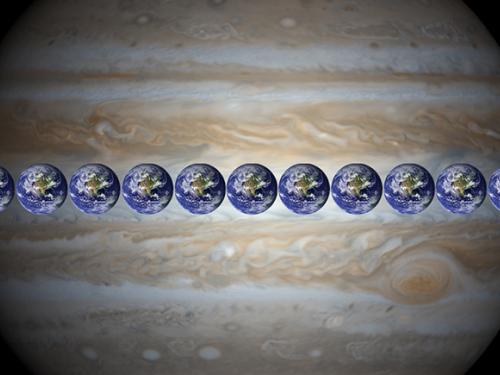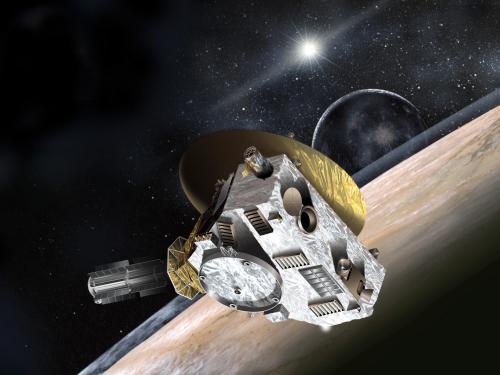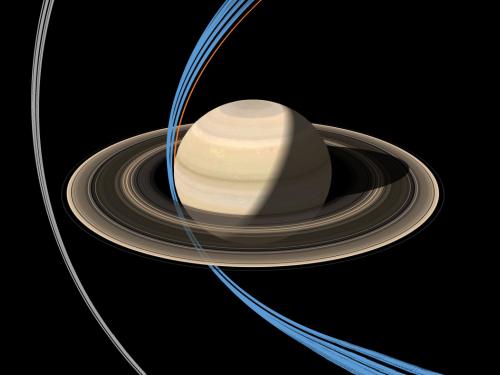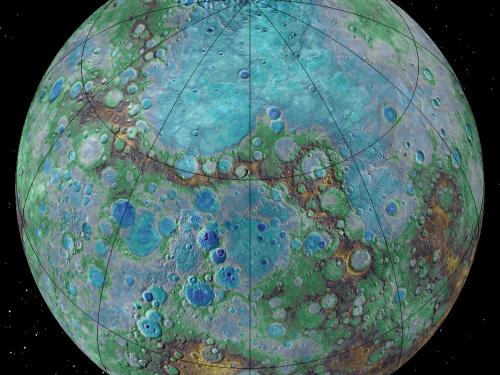
Stories of daring, stories of technological feats, stories of prevailing against the odds ... these are the stories we tell at the National Air and Space Museum. Dive in to the stories below to discover, learn, and be inspired.
Showing 91 - 100 of 145

April 21, 2017
Earth Day will be celebrated on April 22. An annual event begun in 1970, it is, in the words of anthropologist Margaret Mead, “devoted to the preservation of the harmony in nature.” Before and since that first occasion, spaceflight and the environmental movement have been deeply entwined, shaping how we think about Earth as home as well as our responsibilities to sustain that home.

April 18, 2017
Of the four known giant planets in our solar system, Jupiter is by far the largest. It is wider than 11 Earths side by side and has more mass than all the other seven planets combined. It is made up mostly of hydrogen and helium and has strong winds and storms.

April 13, 2017
On April 7, 2017, New Horizons entered a 157-day-long hibernation. New Horizons is an interplanetary space probe and is NASA’s first mission to Pluto and the Kuiper Belt. After operating steadily for almost two and a half years, the spacecraft and its systems deserve this much-needed break.

March 21, 2017
The Cassini spacecraft has spent almost 13 years exploring the beautiful giant planet Saturn and its amazingly diverse moons. Cassini’s mission will end in September when it plunges into Saturn’s atmosphere, but it will leave behind a wealth of knowledge and wonder.

January 11, 2017
It's 5 o'clock somewhere on Mars!
No human has ever set foot on Mars, but scientists have been working there for years. A day on the red planet is about 40 minutes longer than here on Earth, which wreaks havoc on your workweek.

November 16, 2016
At their core, planetary missions are about exploration, pure and simple. It’s hard to beat the excitement of discovering a new feature on the surface of a planet that’s being imaged by spacecraft for the first time. I had this experience many times during the MESSENGER mission.

November 01, 2016
Visitors to the newly renovated Boeing Milestones of Flight Hall may miss one particular satellite hanging amongst historical heavyweights such as the Ryan NYP Spirit of St. Louis and the Lunar Module LM-2. This object, however, with its distinctive blue solar panels deployed, is a full-scale engineering prototype of Mariner 2, the first spacecraft to radio useful scientific data from the vicinity of another planet, Venus.

September 28, 2016
Being a member of a science team of a planetary mission is like being a starter on a major league baseball team—you’re in the game. That’s how I felt as a member of the MESSENGER mission to Mercury. During the final months of MESSENGER’s time in orbit, before the fuel on the spacecraft was expended and crashed on Mercury’s surface, a decision had to be made—keep the spacecraft in its nominal mapping orbit as long as possible or let the spacecraft altitude drift lower to get as close to the planet as possible.

August 12, 2016
The annual Perseid meteor shower is at its peak (August 11-13). Meteor showers occur when the Earth’s orbit around the Sun takes us through a debris field, which is often a trail of cosmic dust left behind by a comet.

August 05, 2016
On this day in 2011, Juno began its journey to Jupiter. After an almost five-year journey, the spacecraft successfully entered Jupiter’s orbit, and has since been investigating the planet's origins, interior structure, deep atmosphere and magnetosphere.
